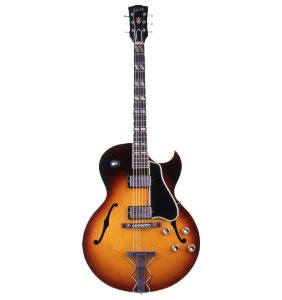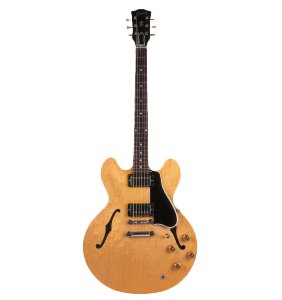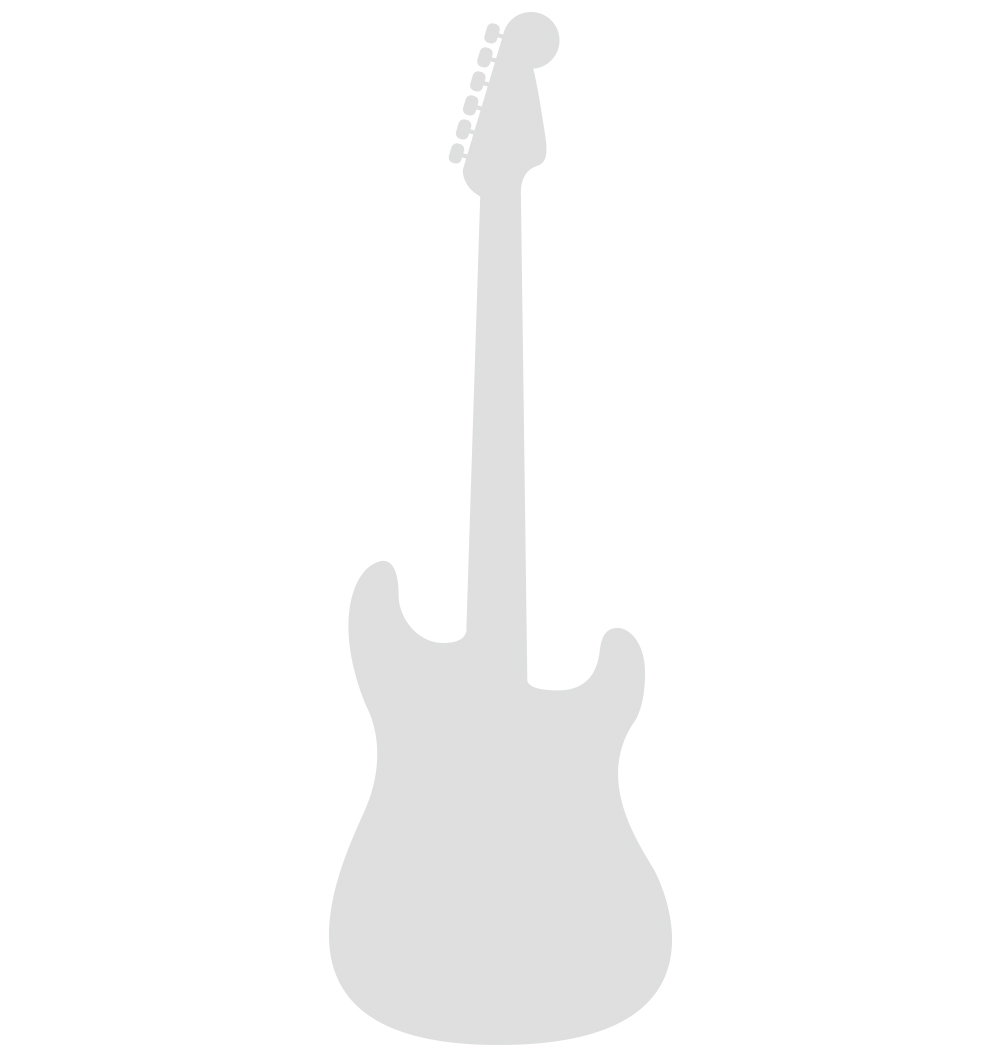Traditional-style electric archtops had deep bodies: Gibson's Super 400 CES and L-5 CES both measured a generous 3 3/8 inches (8.6cm) from top to back. Such ample proportions enhanced these guitars' acoustic sound; but by the 1950s, many musicians were seeking slimmer alternatives that would be easier to play when standing up. In the middle of that decade, Gibson asked Nashville-based session players Billy Byrd (1920-2001) and Hank Garland (1930-2004) to supply a specification for their ideal electric instrument. The guitarists' suggestions led to the creation of a new, 'thinline' model incorporating their ideas, and named the Byrdland in their honour.
Garland and Byrd were influential and highly respected in country music and beyond it. Byrd was famous for his work with singer Ernest Tubb, Garland had been associated with another star vocalist, Eddy Arnold ('The Tennessee Plowboy'), and the two men were also deeply involved with jazz. The guitar they inspired went on sale in 1956, though it had been announced and publicised the previous year: its outline and carved spruce top resembled the L-5's, and, at 17 inches (43.2cm), its width was the same as the older instrument's. However, it was only 2 1/4 inches (5.7cm) deep, and had a narrow neck with a shorter-than-normal scale length designed, as Gibson put it, "for the fast action needed in modern playing." It also boasted two Alnico V pickups and a rounded 'Venetian' cutaway (later changed to the sharper 'Florentine' shape). The Byrdland was an immediate success, and has proved popular with a wide range of performers, from jazzman Barry Galbraith (1919-1983), with whom Hank Garland studied in New York, to hard rocker Ted Nugent.
Gibson's commitment to reducing body depth was demonstrated by two other guitars from its 1955 catalogue, the ES-350T and ES-225T. The T suffix stands for 'thinline', and the 350T was a slimmer replacement for a previous electric archtop with the same 'ES' number, while the 225T was a new model. The following year, a thinline version of the three-quarter size ES-140 was introduced. In its full-depth form (discontinued when the 140T appeared) this guitar had been on the market since 1950, and was intended, to quote Gibson publicity, "principally for youngsters [and] ...guitarist[s] with small fingers". It remained in production until 1968.

GIBSON BYRDLAND, 1964
This 1964 Byrdland differs slightly from the mid-1950s original: it has humbucking pickups instead of Alnico Vs, a Florentine cutaway, and a laminated maple back; backs on earlier Byrdlands were made from solid wood.

GIBSON ES-350T, c.1958
The full-depth ES-350 was introduced in 1947; this model, which replaced it in 1955, is more than an inch (2.5cm) shallower than the original. Its top and body are laminated maple, and it has humbucking pickups.

GIBSON ES-140T, c.1960
The first publicity shots for the original version of this three-quarter size guitar displayed an image of it against the outline of an ES-175, and the smaller instrument is effectively a scaled-down, single-pickup variant of that classic design.
The first thinline archtop models paved the way for an even more radical Gibson design - the ES-335 'semi-solid', which made its debut in 1958. It may have been partly inspired by Les Paul's experimental 'Log' guitar of 1941: this featured a central wood block supporting its pickups and bridge, and offered remarkable sustain and practically no risk of acoustic feedback, but had been rejected by Gibson after Paul showed it to the company.
The ES-335 utilised the same basic principle in a refined and improved form. Outwardly, it looked like a standard thinline archtop, although its double cutaway was an unfamiliar sight on a Gibson instrument. Internally, there were a number of other surprises. The two outer sections of the 335's body were hollow, but at its centre was a strip of maple, with pieces of spruce placed above and below it. These were 'contour braces' connecting with the instrument's top and back, and sealing off its hollow sides. Two humbucking pickups, a 'Tune-o-Matic' bridge, and a 'stud' or 'stop' tailpiece were all mounted on this central section. Their positioning was primarily responsible for the guitar's highly distinctive sound; though modified and enriched by the arched top and side cavities, it had almost as much freedom from feedback as a solid-bodied instrument's.
The 335 was a major landmark in electric instrument technology. Its innovative body design was complemented by a comfortable neck with unrivalled access to the top of the fingerboard; all 22 frets could be reached with ease, and the action was as fast and light as a Les Paul's. At a basic price of $267.50 for a sunburst model (natural finish 335s were $15 dearer) it quickly became a best-seller, and was taken up by a host of leading names in jazz, blues and rock. Though it has been in continuous production since 1958, many musicians and collectors believe that the earliest 335s are superior to later models; the three examples in our photos are so-called 'dot' 335s, made before 1962, when Gibson replaced the original fingerboard dot position markers with block inlays.

GIBSON ES-335TD, 1958
This beautiful early 335 - the letters after its number stand for 'thinline' (T), and 'dual pickup' (D) - is unusual in having no neck binding; standard models are edged with single-ply plastic around their fingerboards. The guitar's other features - a 16-inch (40.6cm) laminated maple body, twin humbuckers with individual volume and tone controls, and a three-way pickup selector switch - as as normal.

GIBSON ES-335TD, 1959 (NATURAL FINISH)
Both this 335 and the 1958 model also shown here are 'natural finish' models. However, their differing shades demonstrate the varying degrees of 'blondeness' between instruments.

GIBSON ES-335TD, 1959 (SUNBURST FINISH)
A sunburst 335 from the same early period as its two companions. Later, a cherry red finish was available as an optional extra.